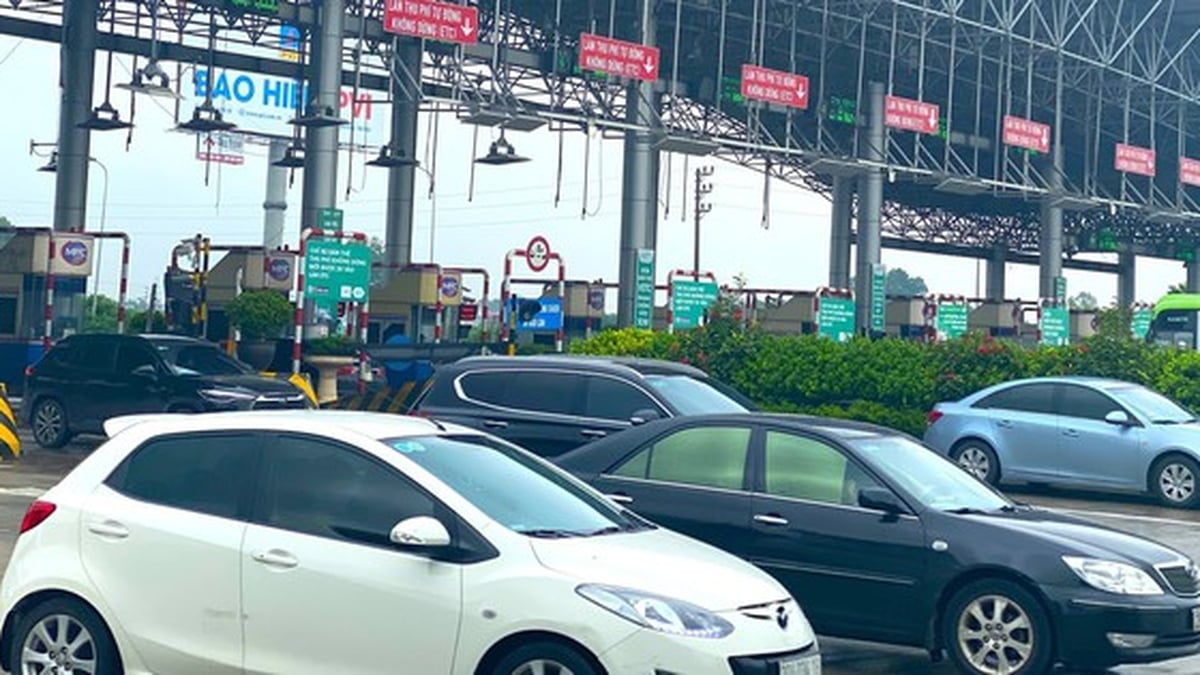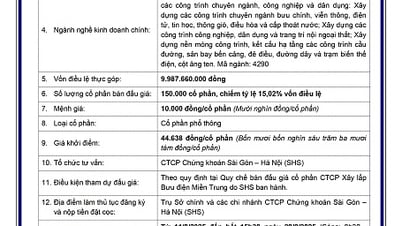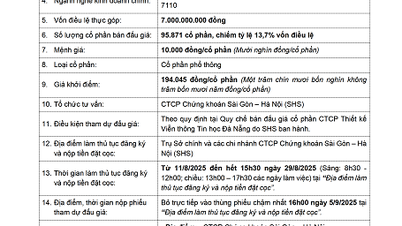The effect of the credit ceiling has faded.
On August 6, 2025, Prime Minister Pham Minh Chinh signed Official Dispatch No. 128/CD-TTg requesting the State Bank to preside over and coordinate with relevant agencies to urgently develop a roadmap and pilot the removal of measures to assign credit growth targets, to be implemented from 2026.
The Prime Minister assigned the State Bank to develop standards and criteria for credit institutions to operate effectively and healthily, have good governance and management capabilities, comply with safety ratios in banking operations and high safety credit quality indexes...
The State Bank is responsible for inspection, examination, supervision and post-audit, preventing systemic risks, ensuring security and safety of the credit institution system and controlling inflation according to the set target.

According to Lawyer Tran Minh Hai, CEO of BASICO Law Firm, the credit growth ceiling is a short way of saying the specific limit rate that the State Bank of Vietnam is still applying to banks, to limit the growth of outstanding credit compared to the previous year.
The credit growth ceiling appeared in 2011, after the economic crisis that lasted from 2008 and was an important solution to help the SBV maintain the banking system through the crisis.
However, the positive effects of the credit growth ceiling have gradually faded. Credit institutions in Vietnam are ready to enter a new growth phase according to the needs and development of the Vietnamese financial market.
"The current credit growth ceiling constrains the development of the financial market. Even with good liquidity, good credit quality, and abundant mobilized capital, many banks are still not allowed to develop credit when they have used up the growth limit," said lawyer Hai.
In fact, since 2024, the State Bank has not assigned credit growth targets to foreign bank branches, in accordance with the characteristics and credit scale of this group. However, for the remaining credit institutions, the State Bank continues to assign credit room, but instead of granting in batches, the State Bank has set a target of 15% from the beginning of the year and assigned all room right from the beginning of the year.
Dr. Le Xuan Nghia, an economic expert, commented: "This is an important stepping stone in the roadmap towards completely eliminating the credit growth limit tool. However, the State Bank needs to have a comprehensive management policy, suitable to the specific conditions of Vietnam, both ensuring autonomy in the operations of the banking system, effectively controlling inflation and maintaining economic security."
According to lawyer Hai, for banks with large total assets such as the state-owned banks, just one percent growth is equal to the entire growth room of joint stock banks. The above problem causes unhealthy competition when joint stock banks, no matter how good, find it difficult to accelerate in the race for credit market share with banks that have established large total assets.
"From those limitations, the credit growth ceiling hinders the development of the credit market, not only affecting the banking sector but also directly affecting businesses. The thirst for capital growth of the business community faces a difficult obstacle when the banks - the place that provides capital for them - cannot exceed the credit growth ceiling," lawyer Hai shared.
Remove credit ceiling to create new automatic mechanism
According to lawyer Hai, business is work, the autonomy of the enterprise, risk management is based on the "taste" and financial potential of each bank.
For a good bank, with good risk management, good human resources, and healthy financial status, if the credit growth ceiling is not removed, the bank cannot freely develop and seek profits according to its actual capacity.
By removing the credit ceiling, the State Bank still has enough measures to manage credit quality and systemic liquidity risks through the safety ratio in operations that credit institutions are applying or legal tools to classify subjects, intervene, control and supervise risky banks.
"Therefore, it is time to reform the banking sector by removing the current credit growth ceiling," said lawyer Hai.
Dr. Nguyen Quoc Hung, Vice Chairman and General Secretary of the Vietnam Banking Association, said that moving towards removing the "credit room" and operating according to the market mechanism is an important direction, but it needs to be implemented cautiously and with a clear roadmap.
Notably, the State Bank of Vietnam has issued Circular 14/2025/TT-NHNN, which stipulates very detailed regulations on capital safety buffers, so credit institutions need to seriously study and implement them. When removing credit limits, instead of the State Bank calculating capital safety indicators, credit institutions must calculate them themselves and take full responsibility. Once there is a violation, the bank will be put on early warning and subject to strict discipline.
In fact, banks are ready for the "transformation". As evidenced by Mr. Nguyen Quang Ngoc, Deputy Head of Credit Policy Department of Agribank, in the case of eliminating the credit room, credit institutions such as Agribank proactively develop annual credit growth plans.
This plan is not only based on capital and asset size, but also must accurately reflect the risk management capacity of each unit in the system.
To limit risks, according to Mr. Ngoc, Agribank has been strengthening credit control through perfecting the internal inspection and control system.
At the branches, post-audit departments are arranged to monitor and check each transaction every day. Meanwhile, at the headquarters, the bank has established internal inspection and control departments in each area to monitor activities throughout the system, especially for credit granting activities when the limit is no longer available. In addition to credit topics, Agribank also promotes the application of information technology in risk management.
"Another outstanding solution is to perfect the internal credit rating system, especially for the small and medium enterprise segment. Accordingly, the credit rating system is built based on both standard and advanced methods, allowing banks to analyze in detail each subject as well as each loan at the organization," said Mr. Ngoc.
Mr. Le Hoai An, a banking training and consulting expert (Integrated Financial Solutions Joint Stock Company) commented that in the current macroeconomic context, the policy of removing credit "room" on the one hand frees up the capacity of the commercial banking sector; on the other hand, it creates more medium- and long-term capital space to support the double-digit GDP growth target of the 2026-2030 period.
"Removing the credit ceiling does not mean that the SBV will be completely limited in its control over the commercial banking sector. Instead of imposing direct limits, the management agency will switch to an indirect method of monitoring credit flows, ensuring that credit granting activities remain in line with the economic orientation, while at the same time, encouraging banks to proactively develop credit on the basis of strong financial management. This is a new automatic mechanism - more flexible, more transparent and closer to the economic cycle - compared to the previous purely administrative framework," Mr. An commented.
Source: https://hanoimoi.vn/go-room-tin-dung-vua-cai-cach-hanh-chinh-vua-thuc-day-tang-truong-711908.html





































































































Comment (0)